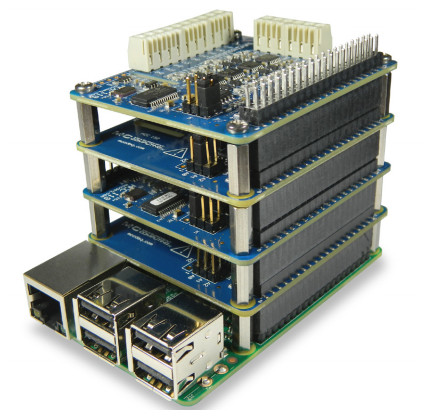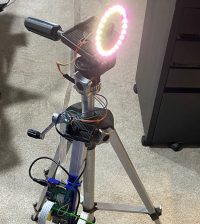- makeITcircular 2024 content launched – Part of Maker Faire Rome 2024Posted 2 weeks ago
- Application For Maker Faire Rome 2024: Deadline June 20thPosted 2 months ago
- Building a 3D Digital Clock with ArduinoPosted 7 months ago
- Creating a controller for Minecraft with realistic body movements using ArduinoPosted 7 months ago
- Snowflake with ArduinoPosted 8 months ago
- Holographic Christmas TreePosted 8 months ago
- Segstick: Build Your Own Self-Balancing Vehicle in Just 2 Days with ArduinoPosted 8 months ago
- ZSWatch: An Open-Source Smartwatch Project Based on the Zephyr Operating SystemPosted 9 months ago
- What is IoT and which devices to usePosted 9 months ago
- Maker Faire Rome Unveils Thrilling “Padel Smash Future” Pavilion for Sports EnthusiastsPosted 10 months ago
Voltage Output and Digital I/O HAT Wears Raspberry Pi

Measurement Computing Corporation announced the release of their MCC 152 voltage output and digital I/O HAT for the Raspberry Pi. Many DAQ users are creating systems around the Raspberry Pi platform, and the growing base of Raspberry Pi users is making single-board-computers more common in professional DAQ applications.
The $99 MCC 152 is equipped with two 12-bit, 0-5 V analog outputs with update rates up to 5 kS/s, 8x bidirectional digital I/O lines with 3.3V and 5V support that can be configured as input or output on a bit by bit basis. Each output bit can source 10 mA and sink 25 mA, and can be individually disabled.
Screw terminal connections are available for all I/O, and power is provided via the Raspberry Pi’s 40-pin GPIO connector. The DAQ HAT supports 0 to 55°C temperatures.
The open-source MCC DAQ HAT Library of commands in C/C++ and Python allows users to develop applications on Linux. The library is available to download from GitHub, and a comprehensive API and hardware documentation are also provided.

smoke















